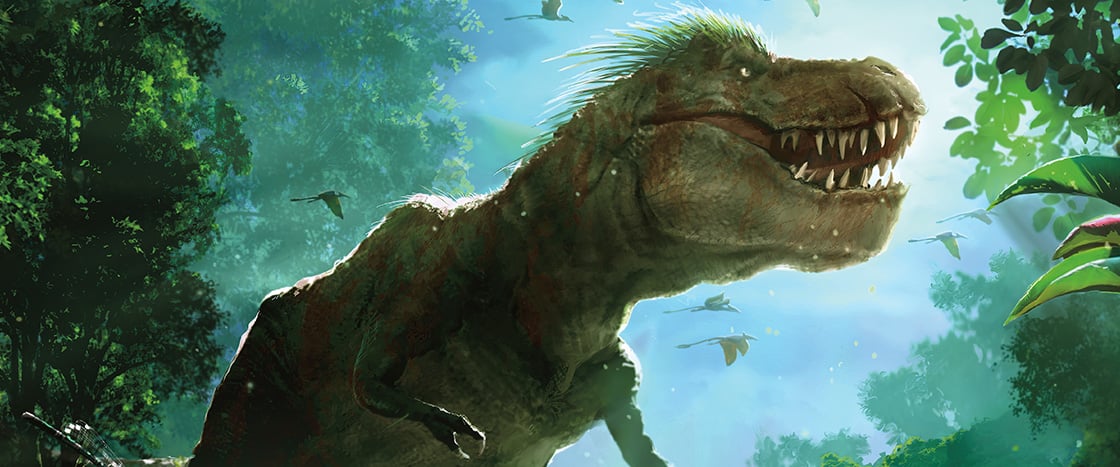GURGLE. GRUMBLE. GROWL.
Your empty stomach wakes you up. It’s a hot afternoon. The air feels thick and muggy, clinging to the scales and feathers along your back. You open your mouth, revealing 60 razor-sharp teeth—each 6 inches long. Your eyes, each as big as a softball, slowly open. You look down at yourself and see—you are a Tyrannosaurus rex!
At first all you see around you are plants. There are no roads or houses. There won’t be people to build them for another 66 million years! The tallest things are trees. The only sounds are the buzz of insects and the chirps of birds.
Your sharp eyes spot something moving in the shadows. It’s a tiny, ratlike mammal. It’s too small for your giant appetite. No, you need to eat a jumbo dinosaur for lunch.
You lift your nose and sniff. A deliciously sour scent floats through the air. A dinosaur is rotting a few miles away. Yum!
You get up to search for it. Your legs are powerful, with killer 8-inch claws at the tip of each toe. You need that strength and grip to lift your body up. At 40 feet long and 20,000 pounds, you’re roughly the size and weight of a school bus.
As you stand, be careful not to topple over. Your arms are only 3 feet long, tiny compared with the rest of your body. You can’t use them to balance. Luckily, you have your tail to help you stay steady on your feet.
BOOM! Your weight shakes the ground as you stalk into the forest.
GURGLE. GRUMBLE. GROWL.
You’re hungry. Your empty stomach wakes you up. It’s a hot afternoon. The air feels muggy. Dew clings to your back. It’s covered in scales and feathers. You open your mouth. Inside are 60 sharp teeth. Each is 6 inches long. Your eyes slowly open. They’re as big as softballs. You look down at yourself. You are a Tyrannosaurus rex!
All around you are plants. There are no roads or houses. There are no people to build them. There won’t be for another 66 million years! The tallest things are trees. The only sounds are those of insects and birds.
Your sharp eyes spot something. It’s a tiny animal. It looks a bit like a rat. It’s too small for you to eat. You need a bigger lunch.
You lift your nose. You sniff. There’s a sour scent in the air. Something is rotting. It’s a few miles away. Yum!
You get up to search for it. Each of your toes has an 8-inch claw. The claws help you grip. Your legs are powerful. You need that strength to lift your body. It’s 40 feet long. It weighs 20,000 pounds. You’re about the size and weight of a school bus.
Don’t fall over as you stand. Your arms are only 3 feet long. They’re tiny, unlike the rest of you. You can’t use them to balance. But you have your tail. It helps you stay steady on two feet.
You stomp into the forest. BOOM! Your footsteps shake the ground.

